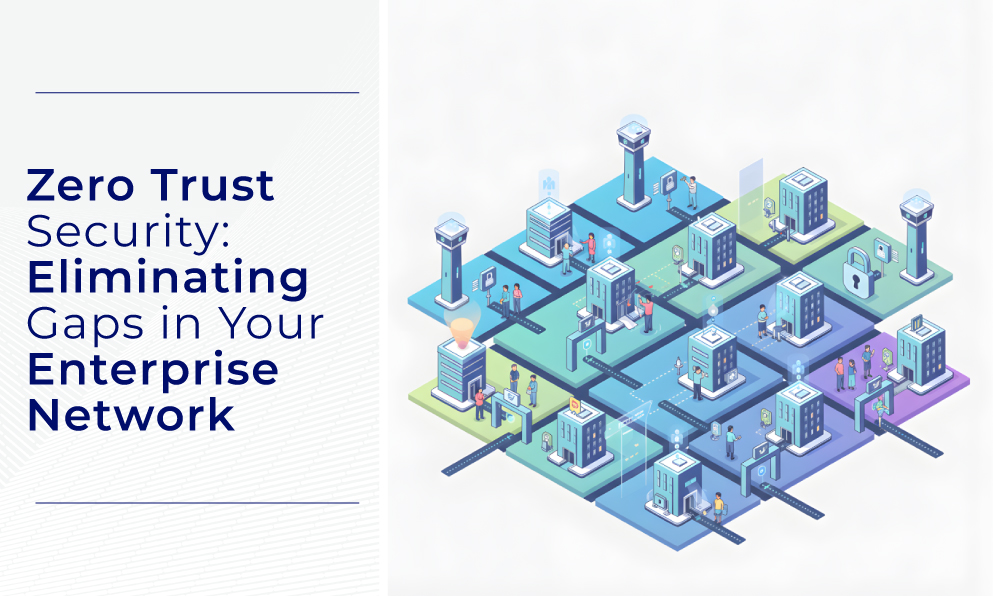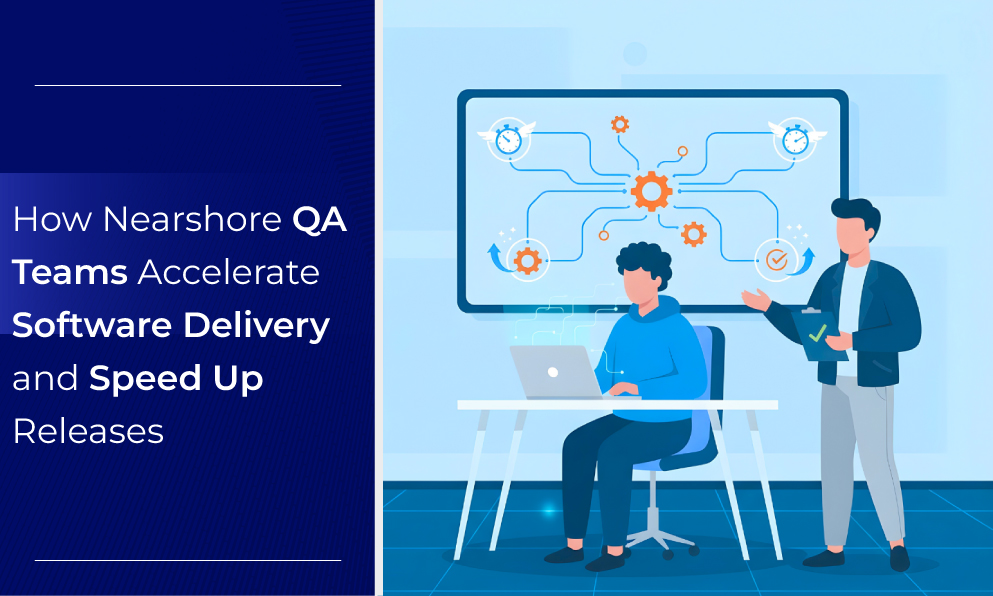What should you look for when hiring a full-stack developer? This is a very difficult question that can't be answered in one word.
However, let's learn about what full stack developer means first.
A full-stack developer is a person who can work on both the back-end and front-end of systems and can develop fully-fledged platforms (with databases, servers, and clients) that don’t need other applications to function.
Now read the below-given article to learn about what to look for when hiring a full stack developer.
The Role of Full Stack Developers
In the world of web, application, and software development, a full-stack developer has high skills. A full-stack developer who is an all-rounder in the programming world is known as the best developer.
A full-stack developer can best manage multiple technical tasks, such as front-end development, back-end development, database development, APIs, and Version Control Systems.
Benefits of Hiring Full-Stack Developers
A full-stack developer is a versatile asset to any development team, as they possess knowledge and expertise in both front-end and back-end development.
Because they have problem-solving skills, they can handle complex issues during development, ensuring smooth progress and efficient development. Full-stack developers can handle multiple tasks that would otherwise require separate specialists for each domain, making them cost-effective.
Full-stack developers offer a multitude of benefits to organizations, making them an invaluable asset to any development team.
- Comprehensive Skill Set: Full-stack developers possess a deep understanding of both front-end and back-end technologies.
- They can seamlessly integrate front-end design elements with back-end functionality, ensuring a cohesive and user-friendly experience.
- Problem-Solving Prowess: Full-stack developers are adept at solving complex technical challenges. Their familiarity with the entire development stack enables them to identify and resolve issues quickly, minimizing disruptions and ensuring smooth project progress.
- Cost-effectiveness: By combining the expertise of front-end and back-end development into a single role, full-stack developers eliminate the need for separate specialists. This streamlined approach reduces the overall cost of development while maintaining high-quality standards.
- End-to-End Development: Full-stack developers have the ability to handle every aspect of web development, from designing the user interface to managing the underlying infrastructure. Their comprehensive knowledge allows them to create cohesive and scalable web applications, reducing the need for multiple specialists and ensuring a seamless development process.
- Versatility and Adaptability: Full-stack developers are proficient in working with different programming languages, databases, frameworks, and tools. This versatility enables them to adapt quickly to changing technologies and project requirements, enhancing team productivity and project success.
Key Responsibilities of Full Stack Developers
Full-stack developers play a pivotal role in the creation and maintenance of websites and systems that cater to a company's unique needs. Their responsibilities encompass a broad range of tasks, including:
- Web Design and Development: Designing and developing visually appealing and user-friendly websites, web applications, and platforms. This includes creating the frontend (user interface) and backend (server-side) components of a website.
- User Experience (UX) and User Interface (UI) Design: Working closely with design teams to ensure that user interactions on web pages are intuitive, engaging, and consistent with the company's branding and overall user experience goals.
- Back-end Development: Developing and maintaining the back-end infrastructure of websites and applications, including databases, servers, and APIs. This involves writing code to handle data processing, storage, security, and other server-side operations.
- Cross-Platform Compatibility: Ensuring that websites and applications are compatible with different devices, browsers, and operating systems. This involves testing and optimizing the performance of the website on various platforms and devices to provide a seamless user experience across different environments.
- Integration and Collaboration: Collaborating with front-end developers, designers, product managers, and other stakeholders to ensure that all aspects of the website or application development process are aligned and meet the project requirements.
- Testing and Quality Assurance (QA): Conducting thorough testing of websites and applications to identify and fix bugs, ensuring functionality, performance, and security. This includes both manual testing and automated testing using various tools and frameworks.
- Continuous Learning and Adaptation: Keeping up with the Latest Technologies, Frameworks, and Best Practices in Web Development. Continuously learning and adapting to new technologies and trends to stay at the forefront of the industry.
How to Attract Top Full-Stack Talent
In the current job market, not all full-stack developers possess the necessary skills and knowledge to excel in this demanding role. To address this challenge, organisations seeking top talent in full-stack development must devise effective strategies to attract and retain exceptional individuals.
Try to stay local when you are trying to find the best full-stack developer. You can attract developers with tech jobs that are best suited to your company’s needs.
You can follow the tips given below to attract and hire top-notch developers for your organisation:
- First of all, you need to carefully consider your company's culture and mission statement.
- You need to hire someone in the team who has a similar interest, skill set, and personality type as other members.
- Reinforce the strengths in your new developer that you have built in your existing members.
- It's important to show that your company is a good place to work for developers.
- Higher salaries, better benefits, and a fun work environment will help you find the best developer.
- Show them that without buying into any negative stereotypes or assumptions about them, they can succeed at your company.
Challenges in Hiring Full-Stack Developers
It's challenging to hire a full-stack software developer due to the wide range of technical and non-technical skills required, the changing technology landscape, and the importance of cultural fit.
Below are some challenges in hiring a full-stack developer.
Identifying the Right Skills:
A developer should have a wide range of knowledge of Technical Skills, Soft Skills, and Assessing Skills in a constantly evolving field that helps them work with a team, communicate effectively, and manage projects efficiently.
Balancing Depth and Breadth
For building and maintaining all aspects of a web application, a full stack developer requires a unique set of skills that includes both depth and breadth of knowledge. Depth of knowledge means expertise in a particular development area of a developer.
Ensuring Cultural Fit:
Cultural fit means how well a developer's values, beliefs, work style, and personality align with the values and culture of the organisation the developer is applying to join.
At BJIT, we have an internal resource training facility that sets us apart from other companies. This facility ensures that our developers are constantly updated with the latest technologies and industry trends. We invest heavily in training and developing programmers to provide our developers with the skills and knowledge they need to deliver exceptional results.
Our developers undergo rigorous training sessions conducted by experienced professionals. These sessions cover a wide range of topics, including programming languages, frameworks, tools, and methodologies. We also provide hands-on experience through real-world projects, allowing our developers to apply their knowledge and gain practical skills.
As a result of our comprehensive training programme, our developers are highly proficient in the latest technologies. They are able to quickly adapt to new requirements and deliver innovative solutions. Our clients appreciate the expertise and professionalism of our developers, and they consistently provide positive feedback on the quality of our work.
Conclusion
In conclusion, we have explored the key qualities and skills to look for when hiring a full-stack developer. Full-stack developers are highly skilled professionals who possess a comprehensive understanding of both front-end and back-end development.
They must have a solid foundation in HTML, CSS, and JavaScript, as well as proficiency in server-side programming languages such as Python, Java, or Ruby. Additionally, full-stack developers should be proficient in database management systems, such as MySQL or PostgreSQL, and have a strong understanding of software engineering principles and best practices.
When interviewing full-stack developer candidates, it is important to assess their technical skills and knowledge, as well as their ability to work effectively in a team environment. It is also important to consider their problem-solving skills and their ability to learn and adapt to new technologies.
FAQs on Hiring Full Stack Developers
1. What is a full-stack developer?
A full-stack developer is a software engineer who can work on both the front-end (client-side) and back-end (server-side) of a web application.
2. What are the benefits of hiring a full-stack developer?
Full-stack developers offer several benefits, including:
- Versatility: They can handle tasks requiring front-end and back-end expertise.
- Efficiency: They can work independently without needing multiple developers for different aspects.
- Cost-effectiveness: Hiring a full-stack developer can be more cost-effective than hiring separate front-end and back-end developers.
3. How can I attract top full-stack talent?
To attract top full-stack talent, you can:
- Offer competitive salaries and benefits.
- Create a positive and challenging work environment.
- Emphasise the opportunity for professional growth and development.
- Highlight the company's culture and values.
4. What are the challenges of hiring a full-stack developer?
Some challenges in hiring a full-stack developer include:
- Identifying candidates with the right skills and experience.
- Balancing the need for depth and breadth of knowledge.
- Ensuring cultural fit.
5. What skills should I look for in a full-stack developer?
When hiring a full-stack developer, look for candidates with the following skills:
- Front-end development: HTML, CSS, and JavaScript
- Back-end development: Programming languages (e.g., Java, Python, PHP, Ruby), databases (e.g., MySQL, PostgreSQL, MongoDB)
- System architecture
- Communication and teamwork skills











